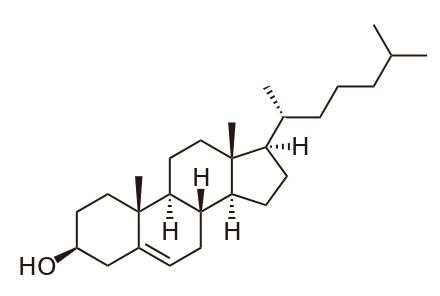I’ve been wanting to do a little research in order to post another article regarding how light affects us ever since I posted the article about how light affects the retina in the eyes. And, sorry, that was a long time ago. If you are interested in a blast from the past, you can revisit The Art of Seeing – can you see auras? Posted back in July of 2010.
Back then, I brought up how the retina I the eye changed when a photon of light struck the molecule. The energy gave it a charge and that charge caused the shape of the molecule to twist ever so slightly. Yet, the twist is just enough that we humans can sense the change as color.
Well, as it turns out, there is another very common molecule that is a created from a combination of Cholesterol and sunlight. Very similar to photosynthesis, there is a process called Photochemistry that is described (at the Wikipedia as):
Light is a type of electromagnetic radiation, a source of energy. The Grotthuss–Draper law (for chemists Theodor Grotthuss and John W. Draper) states that light must be absorbed by a chemical substance in order for a photochemical reaction to take place. For each photon of light absorbed by a chemical system, no more than one molecule is activated for a photochemical reaction, as defined by the quantum yield.
Chemical reactions occur only when a molecule is provided the necessary “activation energy“. …. In case of photochemical reactions light provides the activation energy. Simplistically, light is one mechanism for providing the activation energy required for many reactions. …
The absorption of a photon of light by a reactant molecule may also permit a reaction to occur not just by bringing the molecule to the necessary activation energy, but also by changing the symmetry of the molecule’s electronic configuration, enabling an otherwise inaccessible reaction path, as described by the Woodward-Hoffmann selection rules. A 2+2 cycloaddition reaction is one example of a pericyclic reaction that can be analyzed using these rules or by the related frontier molecular orbital theory.
Basically, electromagnetic energy can be the catalyst for changing a number of different types of molecules. Yet, the one that’s most interesting to me is the molecule that is created when we step into the sunlight – vitamin D3.
Vitamin D3 starts out looking like this:
Somehow, it gets into the pre Vitamin D3 stage and then, with the help of UV light, it turns into Vitamin D3.
I know Cholesterol looks to be a lot simpler than Pre-vitamin D3, but the point is that light gets absorbed into the molecule and that molecule changes shape.
The important part is that once that molecule changes shape, it changes into something that proves to be very helpful for the body. Everyone knows that Vitamin D3 is used to help the body absorb calcium. But what people don’t necessarily recognize is that sunlight provides the charge that changes the molecule within the human body so that it can function in a useful way.
What I find most interesting is not so much that this is two clear cases of sunlight having a direct effect on the body, but rather light (electromagnetic energy) gives a charge to a molecule that allows it to function in a useful way within the human body.
Now, on the crudest side of things, when the body breaks down sugar in order to release the electromagnetic energy, that energy must be captured by other molecules that get spun up in order to perform some new type of work. And, as we all know, science has broken down sugar so that it’s a measure of calories – a measure of energy.
But what about the rest of the body? It would seem that if there are two really simple cases where electromagnetic energy affects molecules within the body, and one of those (retina), directly sends singles into the nervous system, might there be others?
To me, this is where ‘having feelings for someone else’ comes into play. Not only do people live on electromagnetic energy, people give off that same energy. If sunlight can have an effect on the body, why can’t the energy given off by someone else? It would also stand to reason that if the energy within our own body spun-up/twisted molecules in useful ways, might being around someone else have a similar, yet slightly less profound effect?
I’m willing to bet that as time goes on, we’re going to find lots of examples of how electromagnetic energy affects the body. If you really ponder the thought, you may find that it’s not food that we live on, but rather electromagnetic energy – the way we’ve plugged in has always been via food. What if we discovered a new way to power or bodies that didn’t involved eating? What if we could simply ‘plug in’ to some source that provided a charge that restored all our molecules to their best functioning state?
Wouldn’t that be cool?
This is where the fun begins. This is why yoga interests me. Why do some people mediate? Why do these people focus their thoughts? Why do they spend time learning how to be calm? If you were to ask me, I would say that it’s because when you remove the gross energies that move the body physically, emotionally and mentally, you remove the energies that drowned out, or overly stimulate, the subtle receptors. These subtle receptors are what allow us to sense the energy that’s around us. These subtle receptors respond to the energy that is outside of our own creation. These subtle receptors allow us to really connect with other people (life forms) in our existence. Everyone (everything) is giving off energy. The fun part is feeling it!
Breathe and calm the mind. Together we can experience these subtle energies!
Good day.


